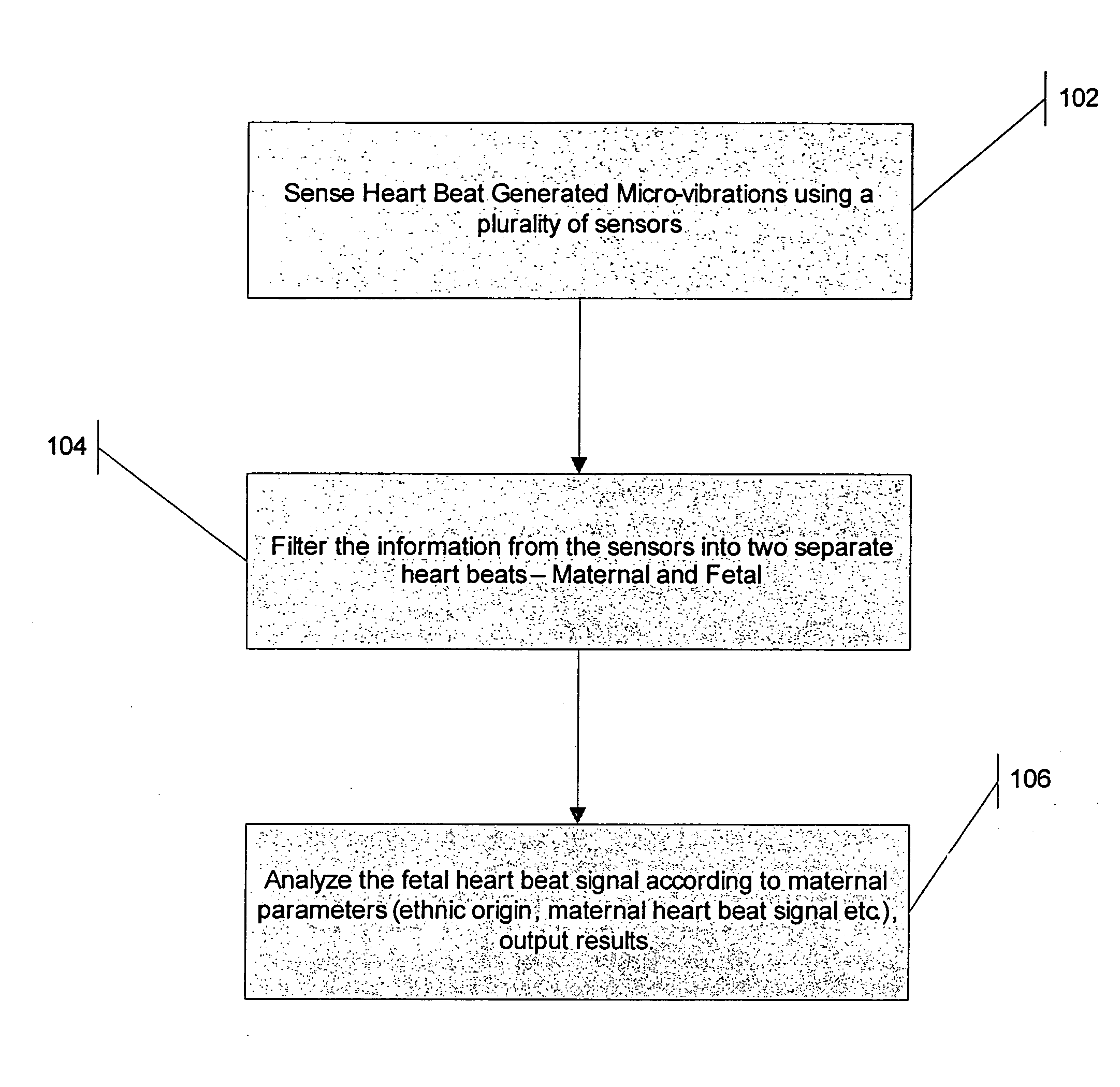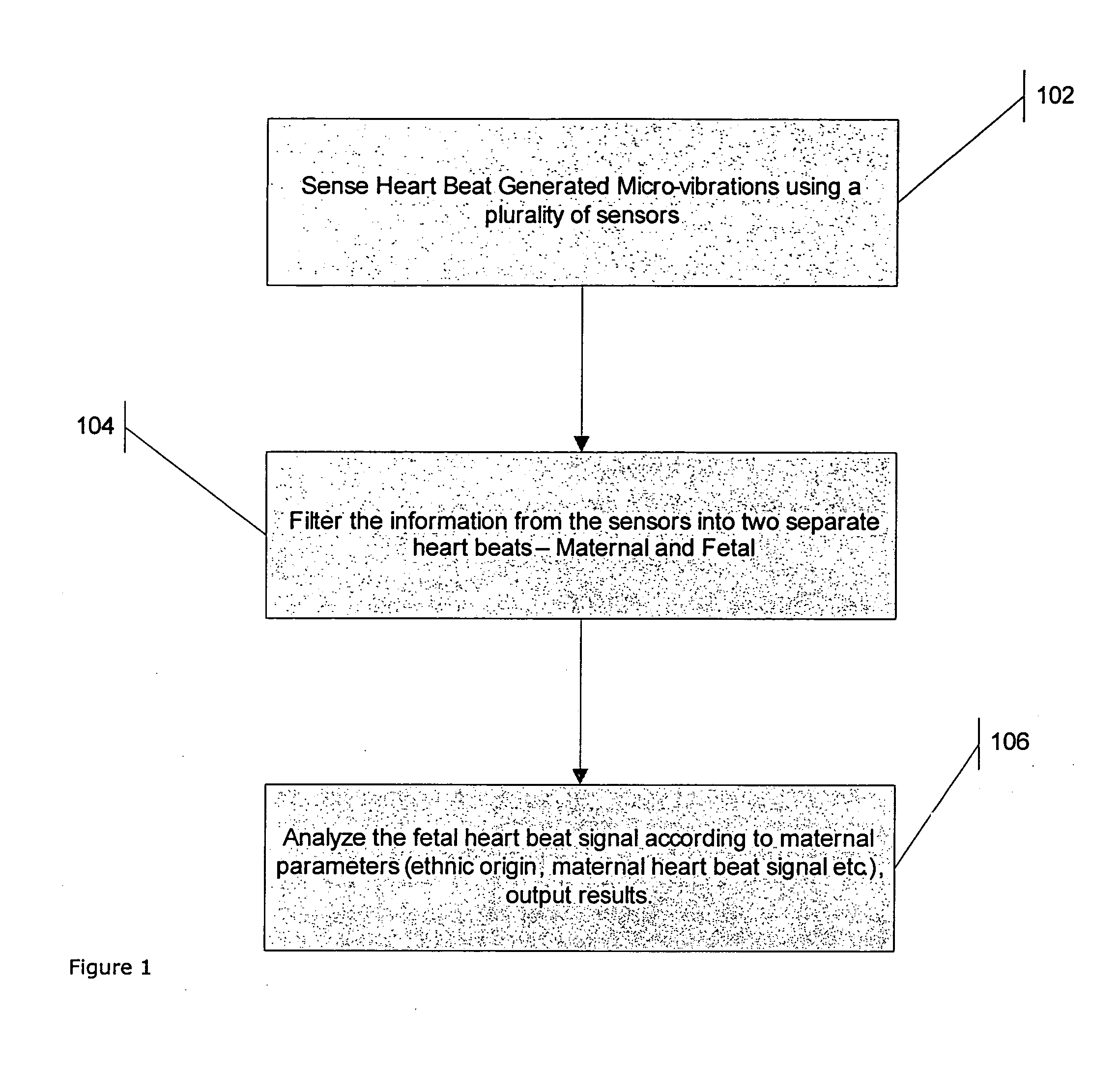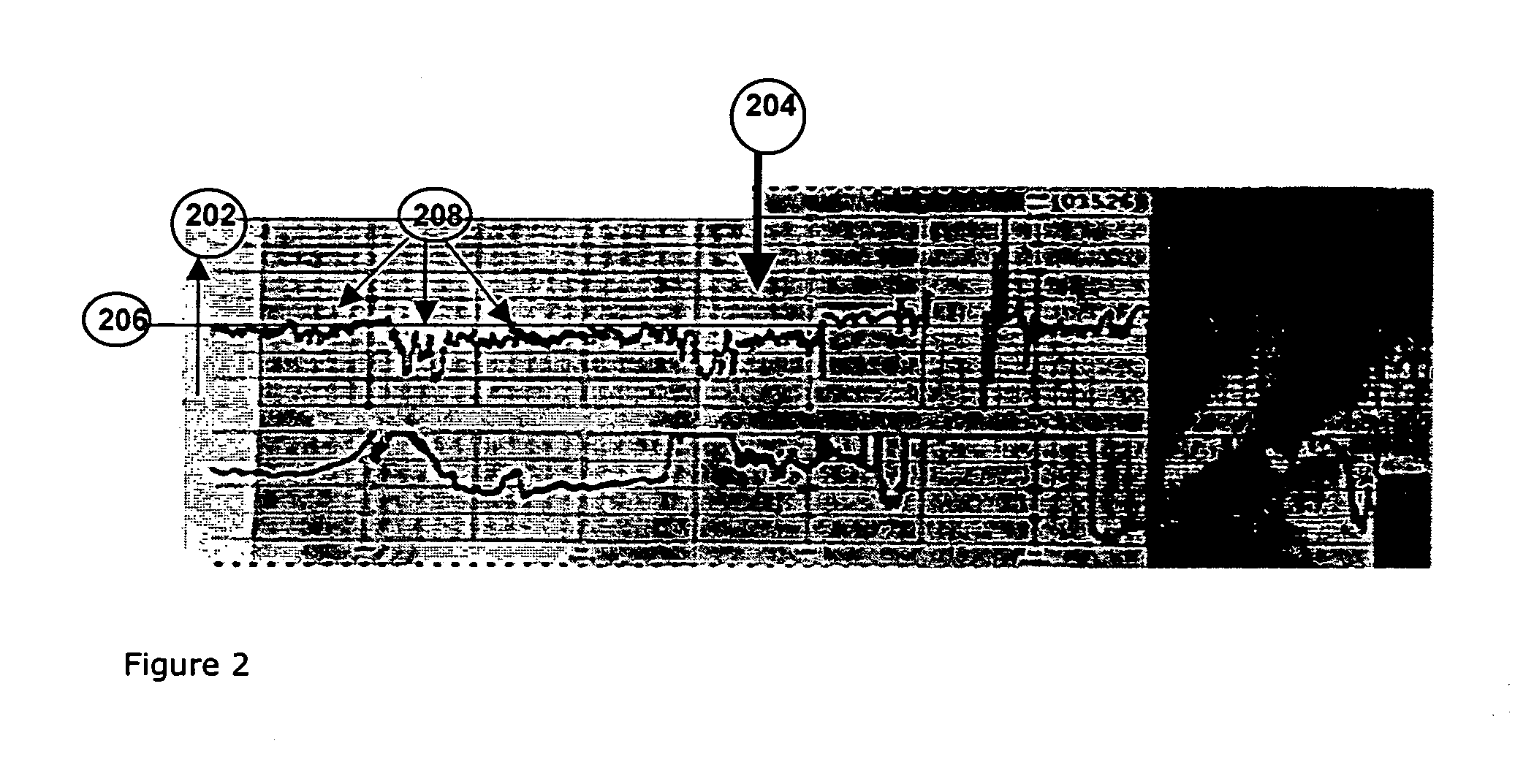Method for continuous, non-invasive, non-radiating detection of fetal heart arrhythmia
a technology detection method, which is applied in the field of automatic detection and analysis of fetal heart arrhythmia, can solve the problems of limited methods for monitoring, detecting and analysing fetal heart rate problems, and difficult examination of the fetus by most examination techniques
- Summary
- Abstract
- Description
- Claims
- Application Information
AI Technical Summary
Benefits of technology
Problems solved by technology
Method used
Image
Examples
Embodiment Construction
[0031]FIG. 1 shows a schematic flow chart describing the main steps of the method of the present invention. In step 102, analog micro-vibration signals are detected using at least one, and more preferably a plurality of sensors located in desired positions around the mother's body, preferably around her abdominal area. “Micro-vibration” in the present disclosure includes “nano-vibration” i.e. vibration processes on both nanometer and micrometer scale. The micro-vibration sensors sense the combined micro-vibration signals produced by the heart motions of both mother and fetus. Micro-vibration sensors applicable for the purposes of the present invention include for example the micro vibrations sensor described in U.S. Pat. No. 6,621,278. The micro-vibration signals are first converted from analog to digital so that they can be processed by a processing element in step 104, for example a digital signal processing (DSP) element. The DSP element performs a signal filtration and noise red...
PUM
 Login to View More
Login to View More Abstract
Description
Claims
Application Information
 Login to View More
Login to View More - R&D
- Intellectual Property
- Life Sciences
- Materials
- Tech Scout
- Unparalleled Data Quality
- Higher Quality Content
- 60% Fewer Hallucinations
Browse by: Latest US Patents, China's latest patents, Technical Efficacy Thesaurus, Application Domain, Technology Topic, Popular Technical Reports.
© 2025 PatSnap. All rights reserved.Legal|Privacy policy|Modern Slavery Act Transparency Statement|Sitemap|About US| Contact US: help@patsnap.com



